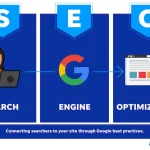Introduction to Digital Marketing: Exploring the World of Online Promotion.
In today’s digital age, marketing has evolved significantly, with businesses embracing new technologies and platforms to reach their target audience effectively. One such transformative approach is digital marketing, which has revolutionized the way companies promote their products and services. In this article, we will provide you with an introduction to digital marketing, outlining its definition, benefits, the differences between digital marketing and traditional marketing, and some popular digital marketing strategies.
Post Topic list
What is Digital Marketing?
Digital marketing refers to the use of digital channels and platforms to promote products, services, and brands. It encompasses a wide range of tactics and techniques aimed at engaging with potential customers online, driving traffic to websites, and generating leads and conversions. These channels include search engines, social media platforms, websites, email marketing, mobile applications, and more. Amazing Internet Marketing Tips
Benefits of Digital Marketing
Global Reach:
One of the significant advantages of digital marketing is its ability to transcend geographical boundaries. With the internet connecting people worldwide, businesses can target a global audience, expanding their reach exponentially.
Targeted Advertising:
Unlike traditional marketing methods, digital marketing enables precise targeting. Through data analytics and user insights, businesses can identify their ideal customer profiles and tailor their marketing messages accordingly. This targeted approach increases the chances of reaching the right audience and achieving higher conversion rates.
Cost-Effective:
Digital marketing can be more cost-effective compared to traditional marketing channels. For instance, running online advertisements on social media platforms or search engines allows businesses to set a specific budget, reaching a large audience without breaking the bank.
Measurable Results:
With digital marketing, businesses have access to a wealth of analytics and tracking tools that provide real-time data on the performance of their marketing campaigns. This data enables companies to monitor their return on investment (ROI), measure the success of their strategies, and make data-driven decisions to optimize their marketing efforts.
Digital Marketing vs. Traditional Marketing
Digital marketing differs from traditional marketing in several key ways. Traditional marketing relies on offline channels such as print media, television, radio, billboards, and direct mail. It often has a broader reach but lacks the precision and targeting capabilities of digital marketing. Here are some notable differences:
What is Traditional Marketing?
Traditional marketing refers to the marketing techniques used by businesses to promote their products or services to a target audience. some of the common forms of traditional marketing include:
- Print Advertising: Printing Flayer, Magazines, and news Ads, all include traditional marketing.
- Direct Mail: Sending Direct Mail to local Users and clients is one of the good examples of this type of offline marketing.
- Events and Sponsorships: To get awareness to the user or targeted audience best way is to do an event sponsor or make an Event on this brand name.
- Telemarketing: collecting the audience’s phone or mobile number and calling or SMS to the leads is called telemarketing.
- Public Relations (PR): Using media coverage and press releases to create a positive image of the brand.
- Billboards and Posters: Highly crowded areas making a large advertisement can make attraction to people.
- other: Broadcast Advertising, Outdoor Advertising, Word of Mouth, Networking, and Referrals, including Traditional Marketing
Cost:
Traditional marketing methods tend to be more expensive than digital marketing, especially for small businesses with limited budgets. Digital marketing provides cost-effective alternatives with various pricing models, including pay-per-click (PPC) and cost-per-impression (CPM).
Targeting:
Digital marketing enables precise audience targeting through demographic, behavioral, and geographic segmentation. Traditional marketing typically targets a broader audience without the same level of granularity.
Interactivity:
Digital marketing allows for two-way communication between businesses and consumers. It facilitates engagement through social media, comments, reviews, and interactive content. Traditional marketing methods often lack this direct interaction.
Introduction to Digital Marketing: Digital Marketing Strategies
Digital marketing encompasses a range of strategies, and businesses often utilize a combination of these tactics to achieve their marketing goals. Some popular digital marketing strategies include:
Digital Marketing Types – What is Digital Marketing in 2023
Search Engine Optimization (SEO):
SEO is the well-known work or most used work in this section. SEO stands for Search engine optimization. Search engines play a major role in our daily lives. Most people get or find their problem solution on search engines. Search engines like Google, Bing, Baidu, and DuckDuckGo most used search engines. SEO improves a website’s visibility on search engines by optimizing its content, structure, and backlink profile. It helps businesses rank higher in search engine results pages, driving organic traffic and increasing brand visibility. There are two types of SEO.
- On-page SEO: On-page SEO called technical SEO is all about making the marketing platform like our website or online page search engine friendly. Making Business on Search engines there are some factors to follow. technical SEO includes website speed optimization, mobile-friendly optimization, Crawlability and Indexing, Canonicalization, HTTPS Implementation, Schema Markup, URL Structure Optimization, Pagination Handling, XML Sitemap Optimization, Hreflang Tags, Internal Linking, 404 Error Handling, Structured Data Markup, Robots.txt Optimization, Server and Hosting Optimization, Canonical URLs, and so on. our blogs have different posts on this topic you can check them out. I will try to link it.
- Off-page SEO: Off-page SEO includes backlinks, social media marketing, guest posts, article submissions, and so on. it’s a different post we can write it. make a comment if you want to make a post on this topic. we also have some posts on this topic.
HOW TO SEO YOUR BLOG FOR LASTING RESULTS
Social Media Marketing:
Leveraging social media platforms like Facebook, Instagram, Twitter, and LinkedIn, businesses can engage with their target audience, build brand awareness, and drive traffic to their websites. Social media marketing allows targeted advertising and provides a platform for customer interaction and feedback. You can check out Social Media Marketing Tips | How to do Social Media Marketing
Content Marketing:
This strategy involves creating and distributing valuable, relevant, and consistent content to attract and retain a clearly defined audience. Content marketing aims to establish brand authority, build trust, and drive conversions.
Email Marketing:
Email marketing involves sending targeted messages and promotional materials directly to a subscriber’s inbox. It is an effective strategy for nurturing leads, building customer relationships, and driving repeat purchases.
Conclusion
Digital marketing has transformed the way businesses approach marketing and advertising. Its ability to reach a global audience, provide precise targeting, offer cost-effective solutions, and deliver measurable results makes it an indispensable tool for modern-day businesses. By leveraging digital marketing strategies such as SEO, social media marketing, content marketing, and email marketing, companies can achieve their marketing objectives and stay ahead in today’s competitive landscape.






